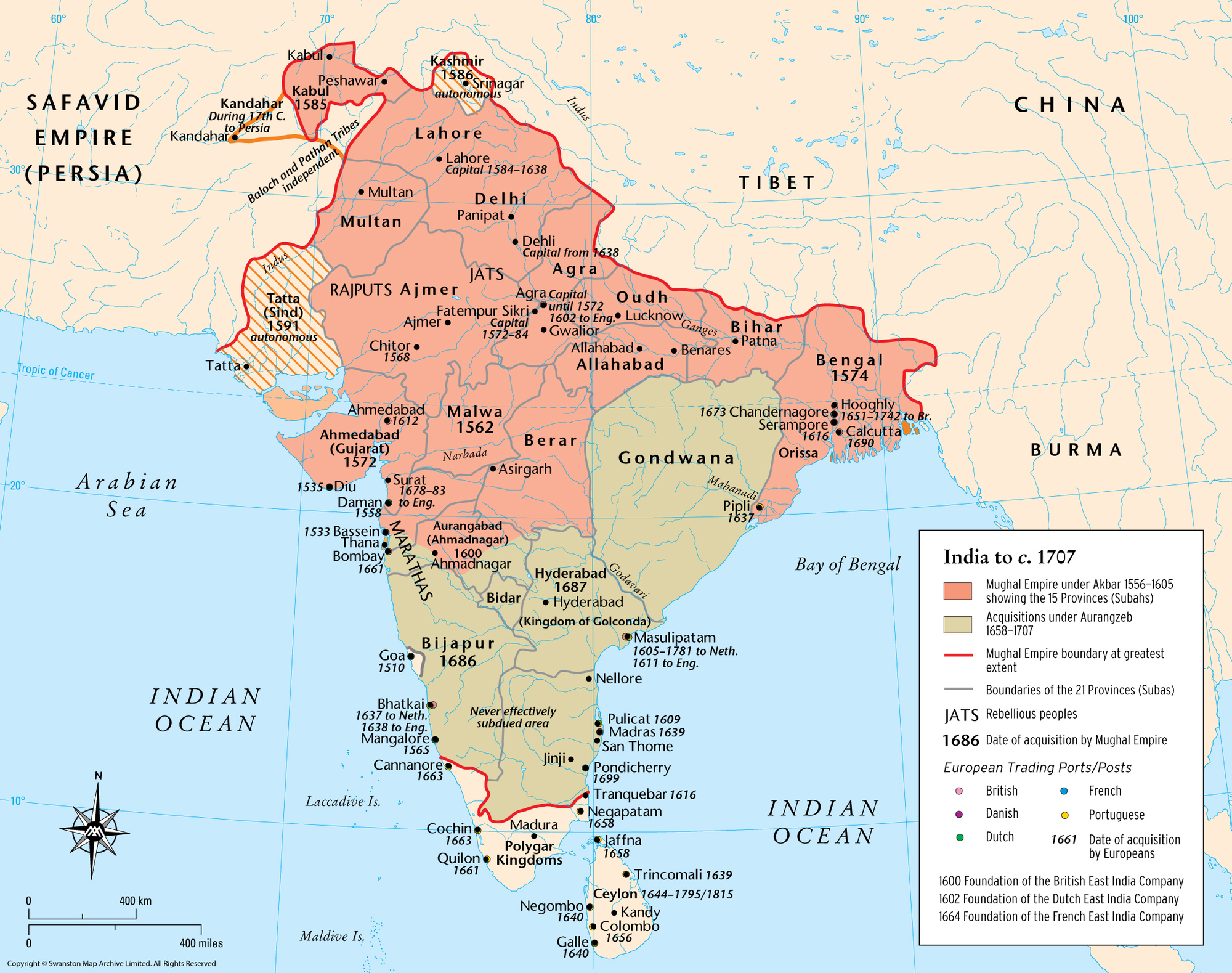“Live in the Vale of Peace”: Religion and the Mughals During the Reign of Aurangzeb, 1658-1707
A discussion of how to teach the Mughal Emperor Aurangzeb using paintings and primary sources.

No Mughal emperor provokes as much criticism and disdain as Aurangzeb does. In India, he has become so tarnished that government officials renamed “Aurangzeb Road” in Delhi in 2015. Most of this disdain stems from the belief that Aurangzeb was an orthodox Muslim who attacked Hindus. This view has even shaped how many world history textbooks portray Aurangzeb. In Traditions & Encounters, the authors describe Aurangzeb in these terms:
Although he greatly expanded Mughal boundaries, Aurangzeb presided over a troubled empire. He faced rebellions throughout his reign, and religious tensions generated conflicts between Hindus and Muslims. Aurangzeb was a devout Muslim, and he broke with Akbar’s policy of religious toleration. He demolished several famous Hindu temples and replaced them with mosques. He also imposed a tax on Hindus in an effort to encourage conversion to Islam. His promotion of Islam appealed strongly to the Mughals themselves and other Indian Muslims, but it provoked deep hostility among Hindus and enabled local leaders to organize movements to resist or even rebel against Mughal authority.
While this view of Aurangzeb as the bad Mughal emperor who contributed to the empire’s decline is widespread in world history textbooks, it fails to consider Aurangzeb and his policies in their complete historical context and misrepresents the stability of the empire under previous rulers. For example, in the post about Jahangir, I discussed how Malik Ambar regularly challenged and frustrated the Mughals.

If we want to help students better understand how Aurangzeb fits into the Mughal Empire, we need to move beyond the oversimplified story of him as the bad emperor I discussed in the introductory post on the Mughals. By considering a few different paintings of Aurangzeb and some short quotations from his letters, we can help students see a more nuanced picture of Aurangzeb that goes beyond the image of him as a Muslim zealot. These sources can help students understand that Aurangzeb was concerned about being seen as a practicing Muslim, but he also was not opposed to Hinduism or other religions.
Aurangzeb, the Muslim Emperor
This content is for Paid Members
Unlock full access to Liberating Narratives and see the entire library of members-only content.
SubscribeAlready have an account? Log in



